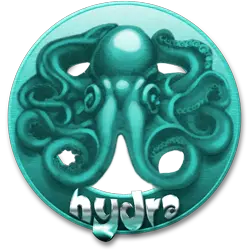
Beyond Straight Lines: 5-Point Perspective
Introduction: Unveiling Curved Worlds

Have you ever wanted to draw a scene that bends and curves, like a swirling staircase or a sprawling cityscape? Regular perspective is fantastic for straight lines, but what about environments that defy that rule? Enter 5-point perspective, a powerful technique that unlocks the ability to draw curved spaces with incredible depth and realism. By mastering this method, you’ll be able to bring dynamic environments to life on the page, creating a truly immersive experience for viewers. So, grab your pencils and get ready to warp reality – the journey into curved perspective begins now!
Setting Up the Grid: Your Roadmap to Curves
In regular perspective, vanishing points (VPs) are the magical spots where parallel lines converge as they recede into the distance. 5-point perspective takes this concept a step further. Here, we’ll use three VPs instead of one or two: a Left VP, a Right VP, and a Center VP. Imagine standing in the center of a curved hallway – the left and right walls would vanish in opposite directions, hence the two side VPs. The Center VP helps us render the curvature itself.
To get started, draw a clear horizon line representing your eye level. Now, place the Left VP and Right VP on either side of the horizon line, at equal distances. The final piece is creating two additional VPs, one above and one below the horizon line, directly in line with the Center VP. These top and bottom VPs are sometimes called zenith and nadir points, respectively. Don’t worry about perfect placement – these points act more as guides than fixed measurements. In the next step, we’ll connect these VPs to create our curved grid, the foundation for your warped masterpiece!
Constructing the Curved Grid: Your Canvas Takes Shape
Now that we have our vanishing points (VPs) mapped out, it’s time to build the grid that will guide our drawing. Remember, these lines won’t be perfectly straight – that’s the beauty of 5-point perspective!
Grab a light touch with your pencil, because we’re about to create some curves. First, take an arc and connect the top VP to the bottom VP on one side of the Center VP. Repeat this on the other side, creating two large, curving lines that define the overall curvature of your space. Next, tackle the horizon. Imagine the horizon line as a flexible band – use arcs again to connect the Left VP and Right VP above and below the horizon. These arcs will guide how horizontal lines recede in your drawing.
Don’t get bogged down in perfect precision – these arcs are more like helpful suggestions than rigid rules. The key takeaway is that all vertical lines will curve slightly towards the top and bottom VPs, while all horizontal lines will bend towards the left and right VPs. Think of it as a gentle warping effect that creates the illusion of a curved environment. In the next section, we’ll use this grid as our launchpad to bring your curved world to life!
Drawing in Perspective: Bringing Your Curves to Life
With our trusty curved grid as a guide, we’re ready to dive into the actual drawing! Here’s where the magic happens and your warped world starts to take shape.
Let’s begin with some basic building blocks. Start by sketching simple shapes like boxes and cylinders. These familiar forms are easy to visualize in perspective, and they’ll help you get comfortable using the gridlines. As you draw, pay close attention to how the grid guides the direction of your lines. Imagine each line extending towards its corresponding vanishing point (VP). For example, a horizontal line running along the floor will gently curve towards the Left or Right VP depending on its direction.
Remember, the key to creating depth is building from foreground to background. Start by sketching the closest objects to you, using the grid to ensure they recede correctly. Then, layer the background elements on top, letting them diminish in size and perspective as they move further away.
Don’t forget the power of those VPs! All parallel lines on a single plane (like the sides of a box) will converge at their designated VP. This is what creates the illusion of depth and receding space. By following these guidelines and using the grid as a reference, you’ll be well on your way to mastering the art of drawing in 5-point perspective.
Tips and Tricks: Conquering the Curve
Even the most seasoned artists benefit from a few helpful pointers. Here are some tips and tricks to elevate your 5-point perspective game:
- Lighten Up: As you begin sketching, use a light touch with your pencil. This allows for easy corrections and prevents your initial lines from becoming permanent roadblocks. Remember, you can always darken them later once you’re happy with the placement.
- Practice Makes Perfect: Don’t be intimidated by the curves! Start by practicing with simple curved environments like hallways or tunnels. These provide a focused space to get comfortable with the grid and how lines recede in this perspective.
- Play with the VPs: Once you’ve grasped the basics, experiment with the placement of your vanishing points (VPs). Moving them closer together will create a more dramatic curve, while keeping them further apart creates a subtler effect. This allows you to tailor the perspective to the specific mood and curvature you desire for your artwork.
So, unleash your creativity and have fun warping reality! With a little practice and these helpful hints, you’ll be a master of 5-point perspective in no time.
Conclusion: The World Awaits Your Curves
Congratulations! You’ve taken your first steps into the exciting realm of 5-point perspective. By mastering this technique, you’ve unlocked the ability to draw dynamic, curved environments that will captivate viewers. Remember, the key lies in the grid – it’s your roadmap to creating captivating curves and realistic depth.
Don’t be afraid to experiment! Practice with different layouts, VP placements, and subject matters. The more you explore, the more comfortable you’ll become with manipulating perspective. So grab your pencils, unleash your creativity, and start warping your world! The possibilities in 5-point perspective are endless – happy drawing!










